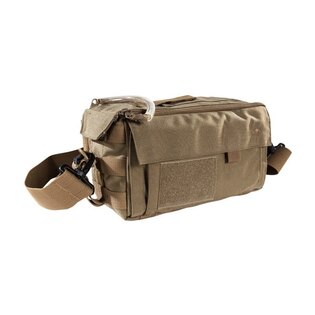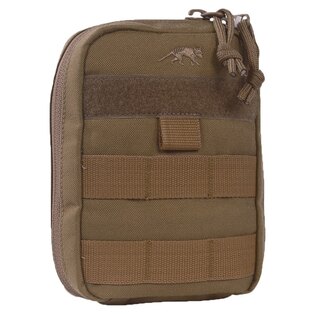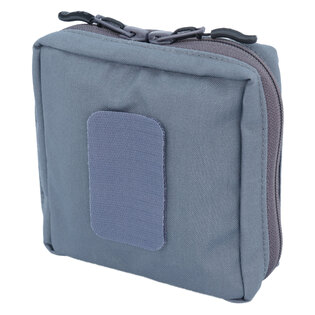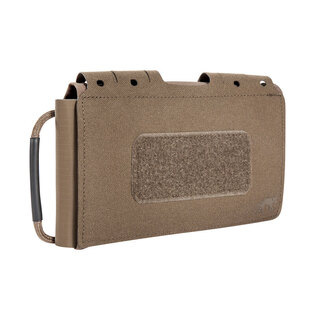What should IFAK look like?
The IFAK (Immediate First Aid Kit) is a basic piece of equipment and an essential tool for responding quickly and effectively to medical emergencies. What criteria should the right IFAK meet? What medical supplies will it contain? And is there a difference between an IFAK and a regular first aid kit? Learn how to set up your IFAK correctly and keep it in good condition. Be prepared for unexpected situations where quick first aid can be crucial.
What is IFAK?
IFAK is a compact rescue package designed to provide immediate first aid in emergency situations. It is a critical piece of personal equipment that you should always have on hand whether you are in the field, in the wilderness or anywhere else. It is therefore not just "mandatory" equipment within the profession (e.g. military, police). IFAK is usually smaller and more portable than a regular first aid kit, which makes it very easy to carry, handle and quickly navigate through the medical equipment.
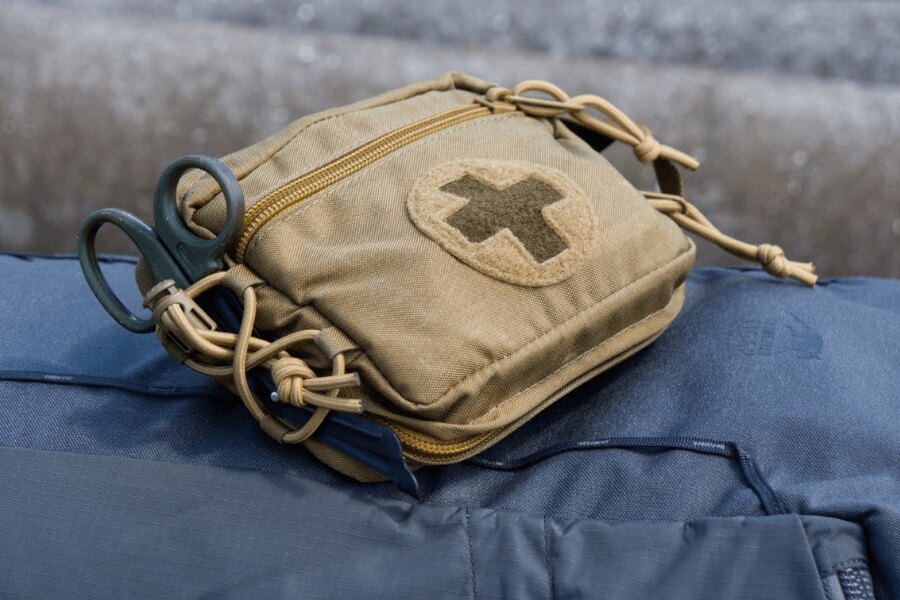
IFAK (Immediate First Aid Kit) is usually smaller and more portable than a regular first aid kit. On the photo here is a Templar's Gear holster. Source: Rigad.
How is IFAK different from a first aid kit?
What sets IFAK apart from the standard first aid kit is its specialization in more serious medical situations and trauma. It contains equipment that can be crucial to saving lives and minimizing damage in the event of severe bleeding, resuscitation, fractures or other serious events.
It is designed to enable a quick and effective response to emergencies, which can be critical for survival. A key and important feature in the selection of an IFAK should be its immediate availability. That is, when attached to equipment (e.g., combat belt, tactical vest), it must be easily and quickly detachable.
IFAK will support you in a variety of situations and environments, from military or police deployments and outdoor adventures to everyday situations where an unexpected medical emergency might arise. Its contents should therefore be very carefully selected and always kept in optimal condition, which includes regularly checking and updating your equipment.
A well-constructed IFAK will give you peace of mind knowing that you are prepared to respond quickly and effectively when needed. However, there is one basic assumption that goes along with this, and that is that you have a basic understanding of the proper use of the tools within it. Therefore, NEVER have tools and equipment in your IFAK that you do not know how to use!
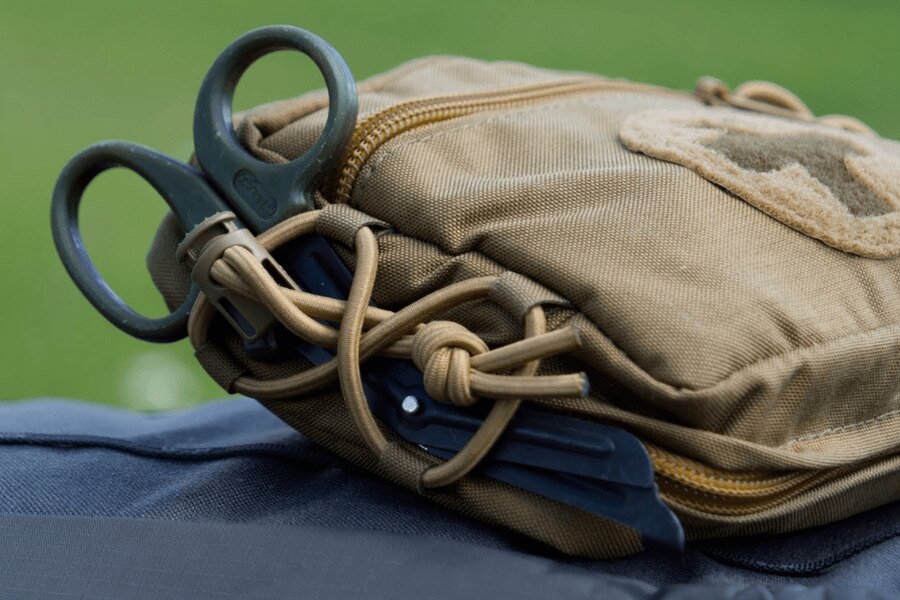
The IFAK contains only medical material that is used to deal with crisis situations and provide emergency first aid. Other equipment, such as plasters and analgesics, can be placed in the first aid kit in your backpack. The photo shows a detail of the Templar's Gear holster. Source: Rigad.
What belongs to IFAK?
Medical supplies are plentiful. However, the more equipment you carry, the bigger and heavier your IFAK will be. In the event of an emergency and under a mental pressure, it could then become an orientation chaos.
- Principle number 1 is therefore: don't choose the IFAK first, but its equipment. After you have assembled all the medical supplies, decide on the specific model and size of your IFAK.
- And there's also Principle number 2: Remember, this is a first aid package for providing emergency first aid in serious, life-threatening situations. That's why it definitely doesn't include, for example, band-aids, ibuprofen and other standard first-aid kits. Keep this material in your backpack.
Priorities C-A-B-C
The recommendation is to proceed according to priorities C-A-B-C: Stop massive bleeding, clear airway, treat chest injuries, treat other bleeding...
- C (Catastrophic hemorrhage) - it is treated by tourniquet. Read everything you need to know about tourniquets.
- A (Airway) – clearing the airway through the nasal airways. This is a rubber tube that does not take up much space. Wear it ideally in combination with the gel supplied in small packs to make it easier to insert.
- B (Breathing) – here, breathing problems, e.g. tension PNO (Pneumothorax), need to be resolved. It is solved with a leak-proof chest cover (e.g. HALO chest seal) and a decompression needle.
- C (Circulation) – treatment of bleeding. Treatment with dressing material or haemostatic agents. One of the best known is the so-called Israeli bandage (or Israeli dressing). It comes in several sizes. Alternatively, of course, other types of high quality pressure dressings can be used.
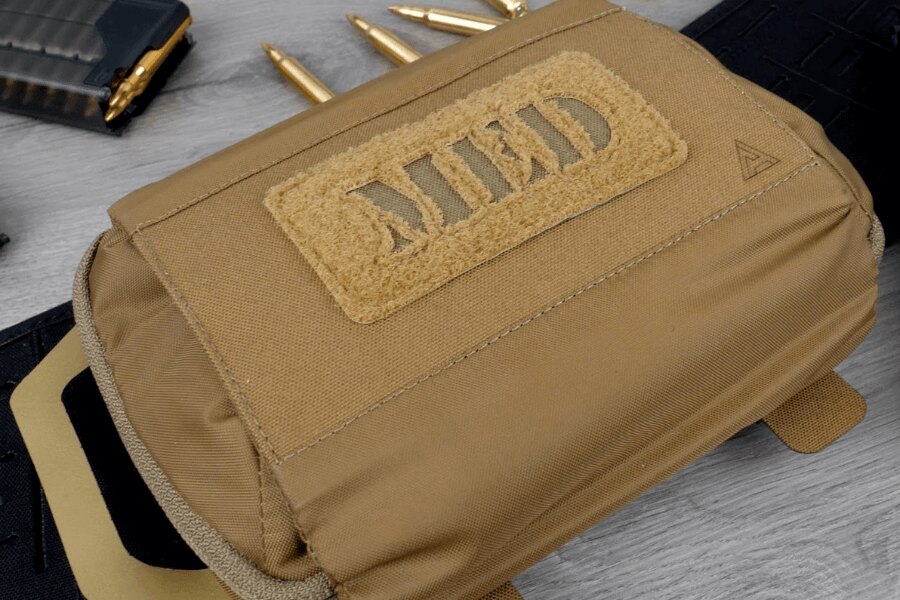
Key features of the IFAK include durability, ease of access and a suitable clamping system. Pictured here is the IFAK Horizontal MK III from Direct Action. Source: Rigad.
Basic equipment
We recommend equipping IFAK with this basic medical material:
- Tourniquet is a key tool for stopping heavy bleeding. It should be readily available and allow quick and effective application.
- Equipment for securing the airways. This includes a nasal airway in combination with a gel for easier insertion.
- Haemostatic dressings contain substances that accelerate the stopping of bleeding. They are a key element for the quick stop of heavy bleeding.
- Chest “seal” together with decompression needle.
- Stabilizing bandages or braces to fix fractures and bone dislocations are crucial to minimize damage.
- Clothes cutters allow quick access to injuries by removing clothing to make room for medical intervention.
- Medical nitrile gloves. Don't be afraid to have multiple pairs in your equipment, they are very portable and definitely not an item to be overlooked.
Other equipment
You can then add the following material if necessary:
- Resuscitative doses of drugs such as epinephrine may be necessary to save lives in situations where an anaphylactic reaction or other serious conditions occur.
- The resuscitation mask is an important tool for performing artificial lung ventilation and should be equipped with filtration to protect the healthcare worker.
- Infusion set for intravenous hydration. This tool allows intravenous fluid administration, which may be necessary in extreme situations.
Medical supplies outside IFAK
Here are some examples of other medical equipment that is useful to have with you, but not directly in the IFAK (e.g. in the first aid kit in your backpack):
Analgesics and medications:
- Basic painkillers: paracetamol or ibuprofen can be useful for pain and fever relief.
- Anti-inflammatory drugs: these drugs can help reduce swelling and pain in the event of an injury.
Tools:
- Tweezers: helps to remove foreign bodies from the wound or to remove small objects from the skin.
- Mirror: allows you to see injuries that are otherwise hard to reach.
- Flashlight: it is indispensable to ensure visibility in the dark or in low light conditions.
IFAK types, sizes and solutions
Army IFAKs are designed with the needs of soldiers and combat situations in mind. So let's take a look at the information regarding size, design differences, and the options for attaching them to other gear.
Size
A standard army IFAK usually has dimensions around 18x13x7cm. The compact design makes the IFAK easily portable, which is important, especially if the soldier needs to be mobile and fast. These dimensions are very popular and the most commonly used.
Of course, it is also possible to choose from larger sizes, but these already call for the addition of other equipment, thus increasing the weight and the space required for mounting. This can make the IFAK difficult to navigate in a crisis situation and slow down your response when seconds are at stake.
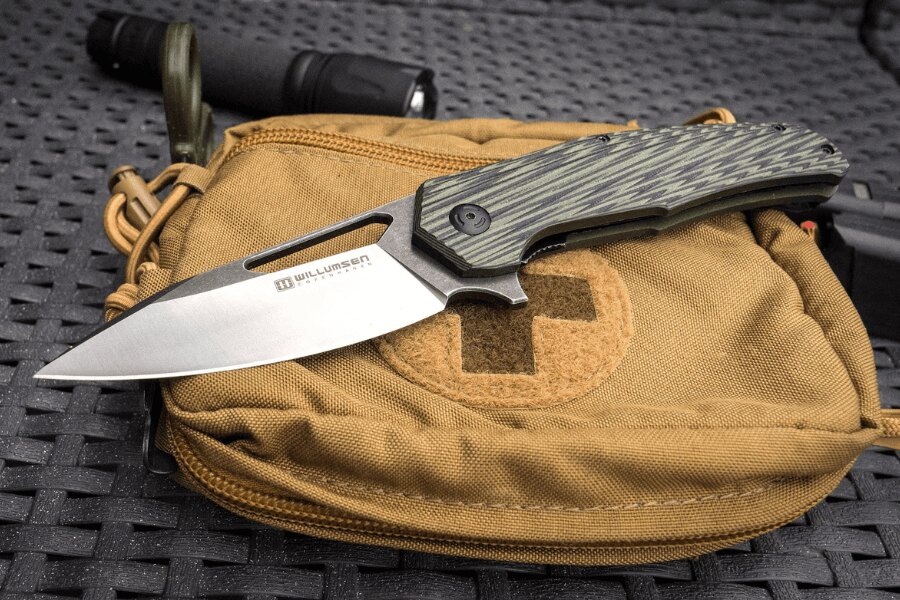
Always keep your IFAK and medical equipment in optimal condition. On the picture here with Templar's Gear IFAK and Willumsen Chibs knife. Source: Rigad.
Design solution
Durability: Military IFAKs often use tactical construction with durable materials such as CORDURA® or ballistic nylon. These materials are known for their resistance to wear and tear and harsh combat conditions. The construction is strong and durable, allowing it to withstand impact, moisture and other external influences.
MOLLE compatibility: MOLLE (Modular Lightweight Load-carrying Equipment) is a system that allows attachment of various tactical accessories, including IFAK, to tactical gear or vest. This means you can easily attach the IFAK to your gear, providing quick access to equipment as needed. It is the most widely used system for attaching IFAKs.
Quick access: Some Army IFAKs have a special quick access system that allows the IFAK to be opened quickly and access equipment immediately. This is critical because in combat situations, time can be a key factor. Quick access can save a life.
Fastening options
- Buckle fastening: Some military IFAKs have a buckle attachment, allowing for easy attachment to tactical gear. The IFAK can be easily released when needed.
- Tapes and velcro: Another option is tapes and Velcro straps to ensure a secure and tight fit on the gear. They are durable and resistant to external influences.
- Leg attachment: Some military IFAKs have a special design with a leg strap. These models are designed to be worn on the thigh..
Finally
Finally, let's summarize the most important:
- Before buying an IFAK, make a list of the necessary equipment you want to have with you at all times.
- Pay attention to the important equipment that is cruical to its use and that you know how to use. Avoid equipment you have never encountered before.
- The more equipment you plan, the bigger the IFAK you will need, so it will take up more space and be heavier.
- Think also about the mounting method and accessibility. Too big a solution is more likely to make you not want to wear it.
- If you are choosing an IFAK more for outdoor activities, then you are of course free to combine the interior equipment to suit you and the environment you will be in. Its equipment will definitely be different from that of professional use.
- Spare no expense! When buying an IFAK, avoid cheap solutions that are very poor in design. You certainly don't want your IFAK to snap, tear or get a zipper stuck. This is, after all, an investment in a potentially life-saving device and it doesn't pay off to be cheap in this case.
Readers are further interested




































































































































































